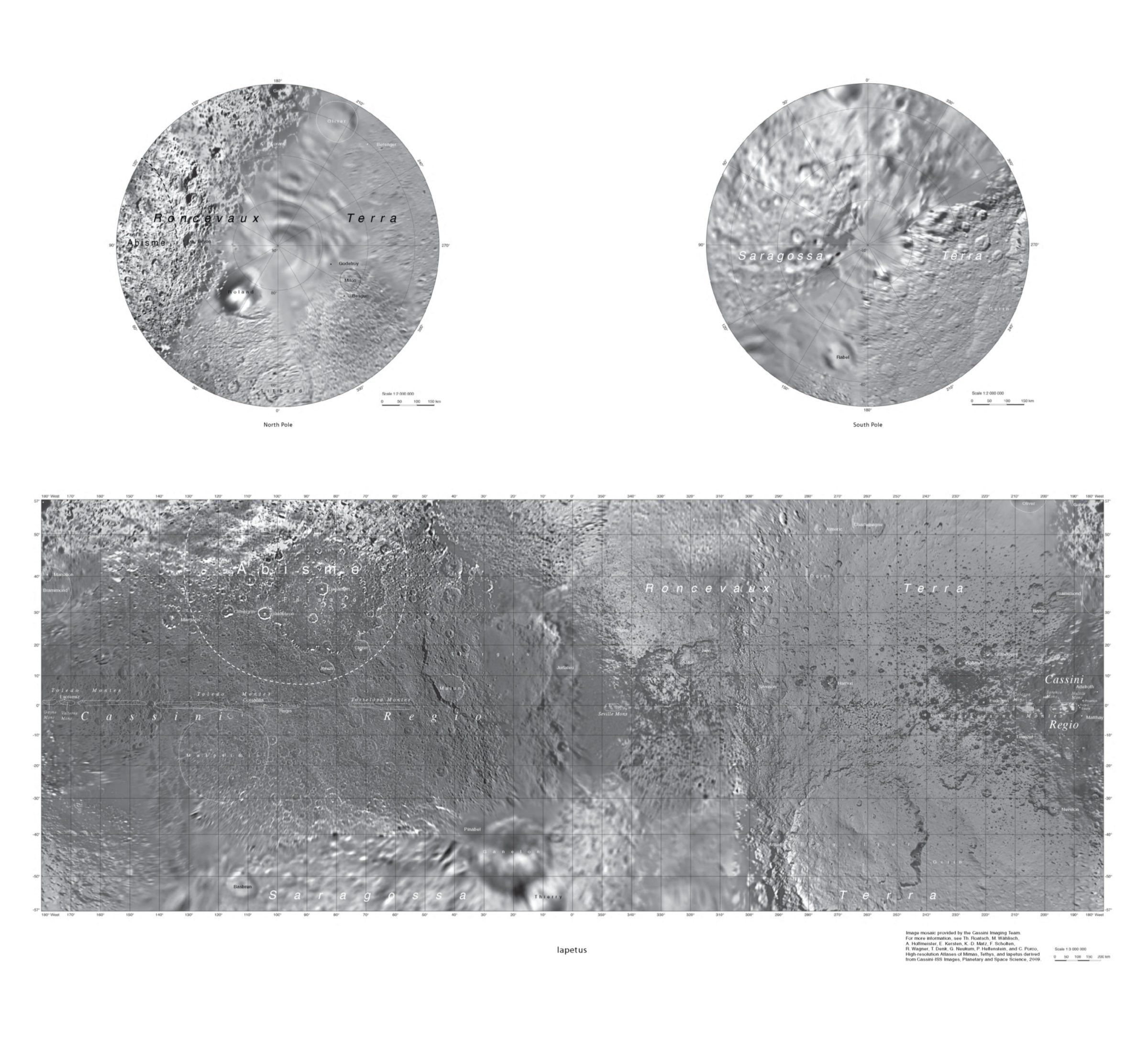Emily Lakdawalla • Oct 27, 2017
Explore spinnable Saturn and Jupiter moons with Google Maps
UPDATE 29 NOV 2017: Google has updated the app to include Callisto, Tethys, and Charon!
Last week, Google Maps released several new map products that allow you to see the locations of named features on many solar system planets and non-planets. The mapped worlds include Mercury, Venus, our own Moon, Mars, Ceres, and Pluto (but not Charon, sadly). Three out of four large Jupiter moons make the list: Io, Europa, and Ganymede, but not Callisto. All but one of the round Saturnian moons is listed: Mimas, Enceladus, but not Tethys for some reason, Dione, Rhea, Titan, and Iapetus. It's handy to be able to rotate the moons to match the aspects of space photos, though I wish the angle of illumination could be changed. But these aren't true 3D shape models, they're just maps stretched over spheres.
I didn't post about this last week because maps for almost half of the worlds didn't align properly with the features. That problem has now been fixed. Google hadn't been aware that there's no common convention for how you center simple cylindrical maps, and some of the maps they'd been given were centered at 0 degrees longitude, while others were centered at 180. Ganymede, Mimas, Enceladus, and several others all had the map names perfectly opposite the globes to where the features were actually located. I'm bemused that there were a lot of Web articles about the Google maps last week that pointed to the new service but said the maps were wrong, pointing to my tweet about it. Serious question to the space journalists who did that: why would you tell your readers about a set of maps that are wrong? I waited until I was sure they'd been fixed before posting this article.
The maps are a neat tool that I expect to make a lot of use of, but they're fairly simple so have limits. They aren't very smart about linear features; one place name has to do for the entire linear feature, and the place name isn't oriented parallel to the linear feature, so where there are a lot of such features in one place, like on Europa, it can be tough to figure out which place name corresponds to which line. The maps intelligently display names for only the largest features when you're zoomed out, which is usually useful, except when it comes to small craters with big ray systems. They may be highly visible features even at great distance, but their names don't show up unless you zoom way in. Finally, polar features on the map of Enceladus don't quite fall in the correct spots, I think because the map projection assumed Enceladus was spherical when it's actually noticeably flattened. For real detail in maps, it's better to look at the ones created by the United States Geological Survey, which are much more reliable. I just posted all their maps of Saturnian moons to our image library. But for spinning globes and matching them to photos, the new Google maps are a valuable service, and I'm glad it's here!

Let’s Go Beyond The Horizon
Every success in space exploration is the result of the community of space enthusiasts, like you, who believe it is important. You can help usher in the next great era of space exploration with your gift today.
Donate Today

 Explore Worlds
Explore Worlds Find Life
Find Life Defend Earth
Defend Earth


